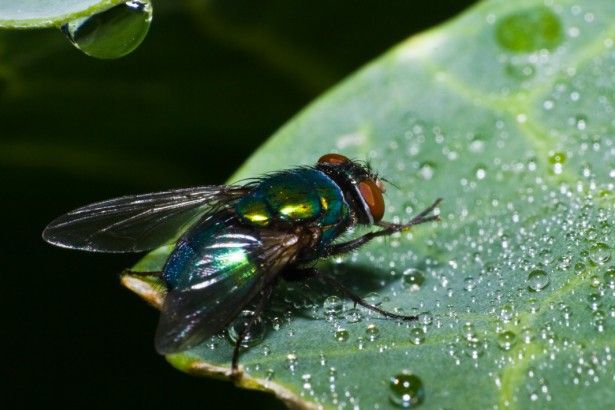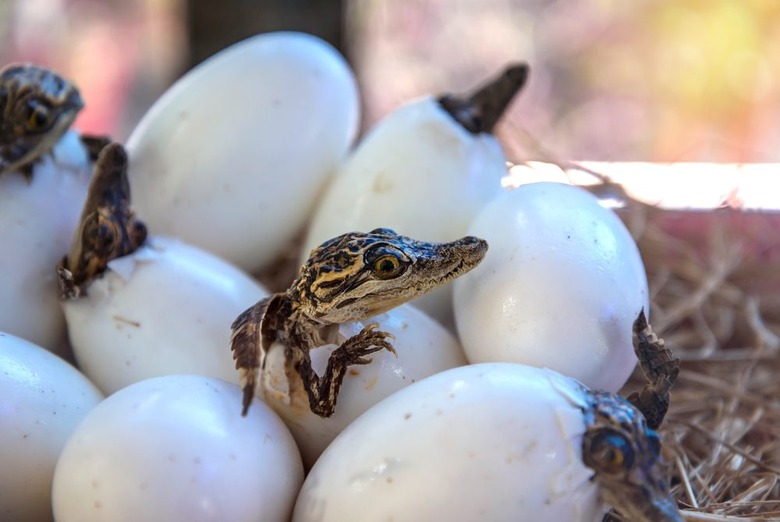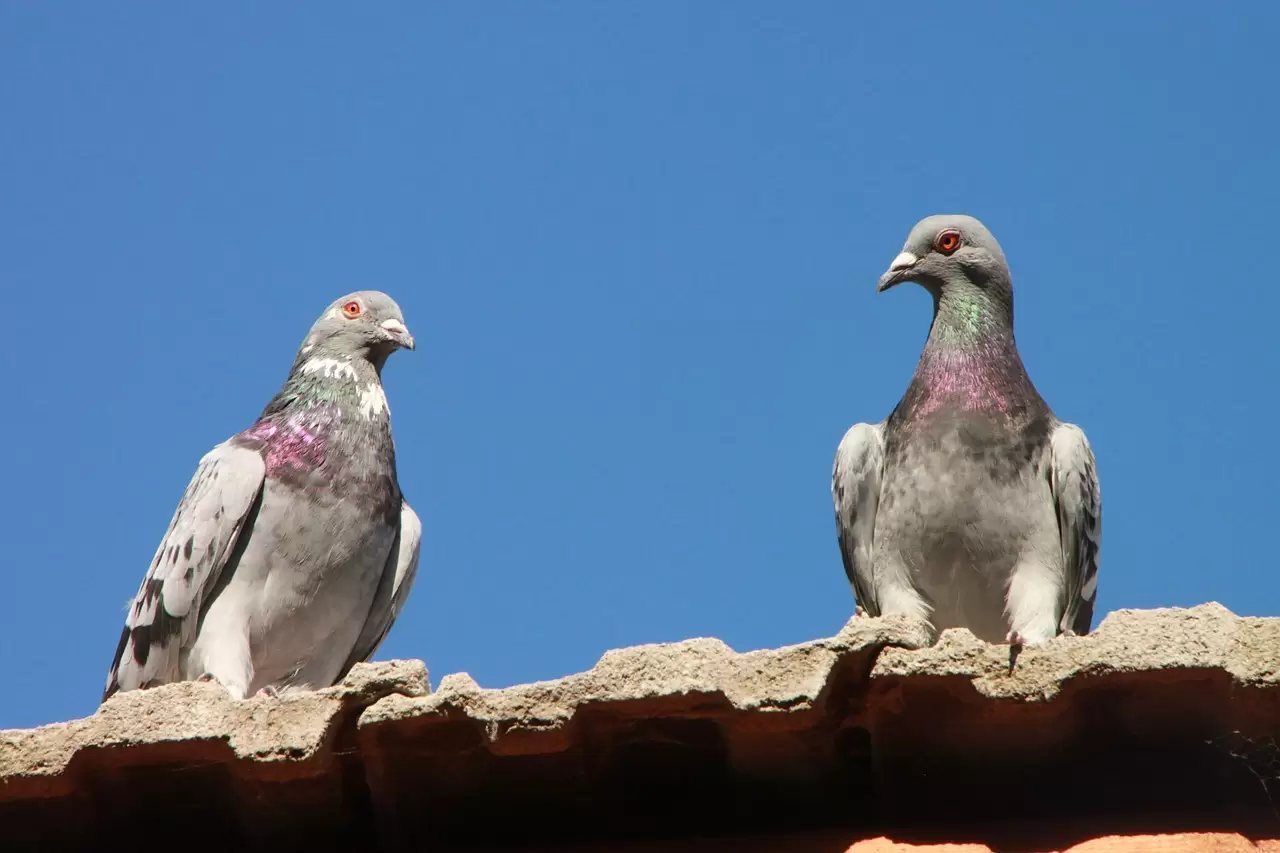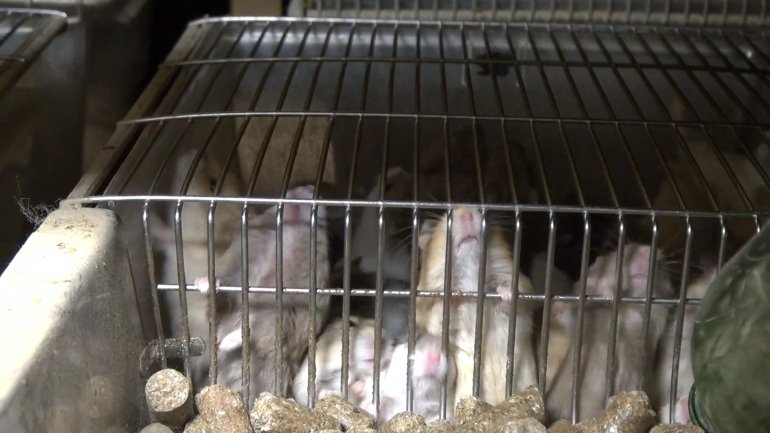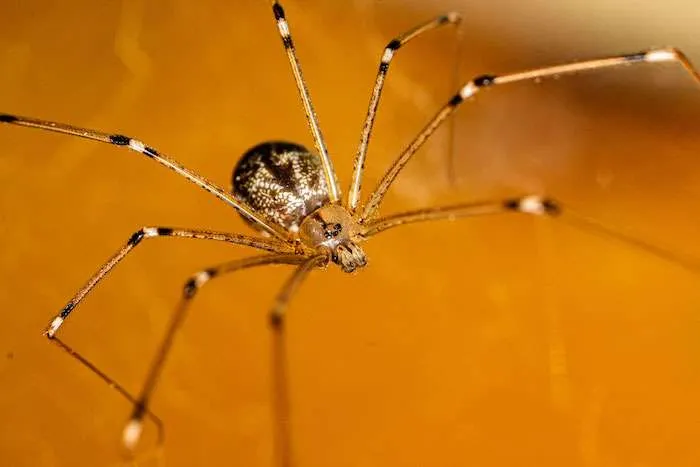When it rains, flies seek safety from raindrops, as they can harm the small and delicate insects. They find refuge under leaves, in plants, or even inside buildings.
This behavior helps them survive the rain. In cities, they might hide under roofs or in small spaces to stay dry. After the rain, they come out again to fly around and search for food.
So, when it’s raining, flies look for a comfortable place to wait until it stops, similar to how we seek shelter during rainy weather. This instinct to find a safe spot during rain is a common survival strategy among insects.
How Do Flies Behave in Varied Weather Conditions?
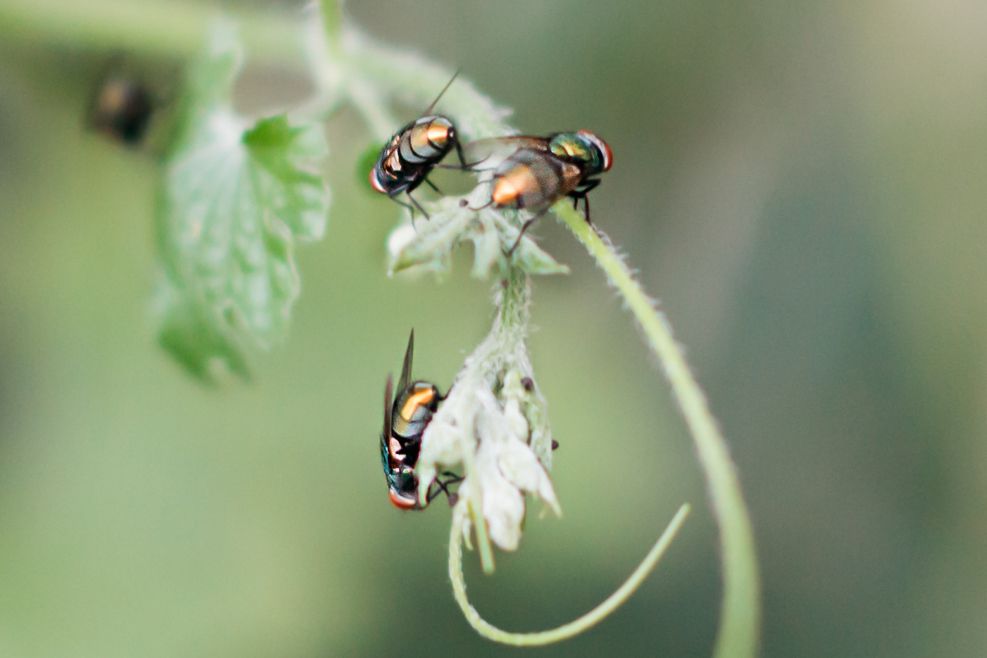
General Fly Activity During Fair Weather
In fair weather, the general activity of flies is marked by a relentless pursuit of resources essential for their survival and reproduction.
Flies, being opportunistic feeders, are drawn to decaying organic matter, such as fruits, vegetables, and animal waste. Their agile flight patterns and constant exploration are not only driven by the search for food but also by the need to locate suitable locations for egg-laying.
This phase of heightened activity contributes to the ecological role of flies as decomposers and pollinators.
How Flies Respond to Changes in Atmospheric Conditions
Flies exhibit a remarkable adaptability to changes in atmospheric conditions. Elevated temperatures and dry weather promote increased fly activity, aligning with optimal conditions for breeding and foraging.
Conversely, cooler temperatures may lead to a slowdown in their movements. Notably, flies possess a keen sensitivity to impending rain. Changes in humidity and atmospheric pressure act as triggers for alterations in behavior, with flies often adjusting their activities in anticipation of the evolving weather.
Observations of Fly Behavior During Rain
When rain begins, flies undergo a significant shift in behavior. Their delicate anatomy makes raindrops potentially harmful, prompting them to seek shelter. Observations reveal that flies tend to retreat to protected areas, such as the undersides of leaves, the shelter of plants, or even inside structures. This adaptive behavior is important for their survival, allowing them to wait out the rain safely.
After the rain subsides, flies emerge once again, resuming their activities in search of food and suitable breeding sites. The nuances of their behavior during rain showcase the intricate strategies these insects employ to navigate changing environmental conditions.
How Does Rain Affect the Movement Patterns of Flies?

Rain significantly influences fly movement patterns, triggering distinct behavioral adaptations in response to the evolving weather conditions.
Reduced Flight Activity
Rainfall tends to inhibit fly flight activity. The presence of raindrops in the air hinders their ability to navigate effectively. As a result, flies often exhibit reduced flight patterns during rain, conserving energy and minimizing exposure to potential hazards.
Temporary Inactivity
Heavy rain may lead to temporary inactivity among flies. Seeking refuge becomes a priority, and flies may suspend their usual foraging and breeding activities until the intensity of the rain diminishes. This adaptive response allows them to conserve energy and avoid potential threats associated with wet environments.
Resuming Activities Post-Rain
After the rain subsides, flies reemerge from their sheltered locations. This post-rain resurgence is marked by a renewed focus on foraging, breeding, and exploration. The temporary hiatus during rainfall does not disrupt their overall life cycle, as flies quickly adapt to the improved weather conditions.
Survival Strategy
The behavior of seeking shelter during rain is a survival strategy ingrained in the instincts of flies. By avoiding direct exposure to raindrops, flies mitigate the risk of physical harm and potential damage to their delicate wings. This adaptive response contributes to their overall resilience in the face of changing environmental dynamics.
How Do Flies Impact the Environment and Ecosystems?
How Flies Help Nature
Flies are like nature’s cleanup crew. In different places, they do essential jobs to keep things in balance. For instance, they’re excellent at breaking down old leaves and animal waste, turning them into useful nutrients for plants.
This helps keep the environment clean and healthy. Some flies also help flowers make new seeds by spreading pollen. So, in a way, flies play a big part in supporting the balance and variety of life in different areas.
How Rain Influences Fly Populations and Distribution
Rainfall serves as a dynamic force shaping the populations and distribution of flies. The impact is nuanced, balancing opportunities and challenges for these insects. Moderate rainfall creates favorable breeding conditions, fostering the development of fly larvae in damp environments.
However, excessive rain can lead to waterlogged areas, limiting breeding sites and potentially reducing fly populations. The availability of moisture influences the abundance of breeding sites, which, in turn, affects the overall distribution of fly populations. Observing these dynamics aids in understanding the delicate balance between rainfall, fly behavior, and the broader ecological we
Can Flies Predict Rain?
Flies themselves don’t possess the ability to predict rain in the way that humans might anticipate weather changes based on meteorological information. However, flies and many other insects are often sensitive to changes in atmospheric conditions that precede rain.
One common observation is that insects, including flies, may exhibit altered behavior before rain. This behavior is often linked to their sensitivity to changes in air pressure, humidity, and temperature. As a low-pressure system associated with an approaching storm often brings changes in these conditions, insects may react to these shifts.
For example, some insects might seek shelter or become less active as a response to the changing weather. Flies may be observed gathering in protected areas, such as under leaves or in sheltered spots, before rain begins. While this behavior doesn’t indicate a predictive ability, it does highlight how insects can respond to environmental cues that often precede rain.
FAQ
Where do flies go when it’s winter?
In winter, flies adopt various survival strategies. Some seek shelter in warm indoor spaces, while others enter diapause, a form of hibernation, outdoors. Certain fly species lay eggs that withstand winter, ensuring a new generation when conditions improve.
What purpose do flies serve?
Flies play crucial roles in ecosystems. They aid in pollination, decompose organic matter, and serve as a food source for other creatures. Despite their reputation, flies contribute to the balance of nature.
How long does a fly live in your house?
The lifespan of a house fly is influenced by factors like temperature and food availability. On average, they live for about 15-25 days. In favorable conditions, they may persist longer.
What bug has the shortest lifespan?
Mayflies have one of the shortest lifespans among insects, typically living only a few hours to a day as adults. Their primary focus is reproduction during this brief period.
Why do flies rub their hands?
Flies “rub” their front legs to clean sensory organs called chemoreceptors. This behavior helps them detect and explore their environment, locate food, and communicate with other flies.
Do flies go to sleep at night?
Flies don’t sleep in the way humans do, but they experience periods of rest or inactivity. During the night, they may find a sheltered spot to rest, conserving energy for their active periods.
Is it OK to eat food that a fly landed on?
While it’s not ideal, the risk of illness from a fly briefly landing on food is generally low. Flies can carry bacteria on their bodies, so it’s advisable to avoid consuming food that has had prolonged exposure to flies.
How do flies see humans?
Flies have compound eyes that allow them to detect movement and changes in light. Their vision is composed of multiple lenses, providing a mosaic view of their surroundings rather than a detailed image.
Why do flies annoy humans?
Flies are attracted to various stimuli, including body heat, carbon dioxide, and odors. Their persistent presence is often driven by the search for food and suitable environments for breeding, which can be a source of irritation for humans.
Final words
All things considered, when rain starts to fall, ever-wonderful flies have their own plan. Seeking shelter under leaves or finding cozy spots in plants, they wisely dodge raindrops. While they might not predict the rain, their actions show a smart response to changing weather.
These tiny insects reveal a hidden world of adaptation and survival, reminding us of nature’s intricate dance. So, next time you see a fly taking cover during a drizzle, appreciate the small but clever moves that keep them buzzing through the rain!







